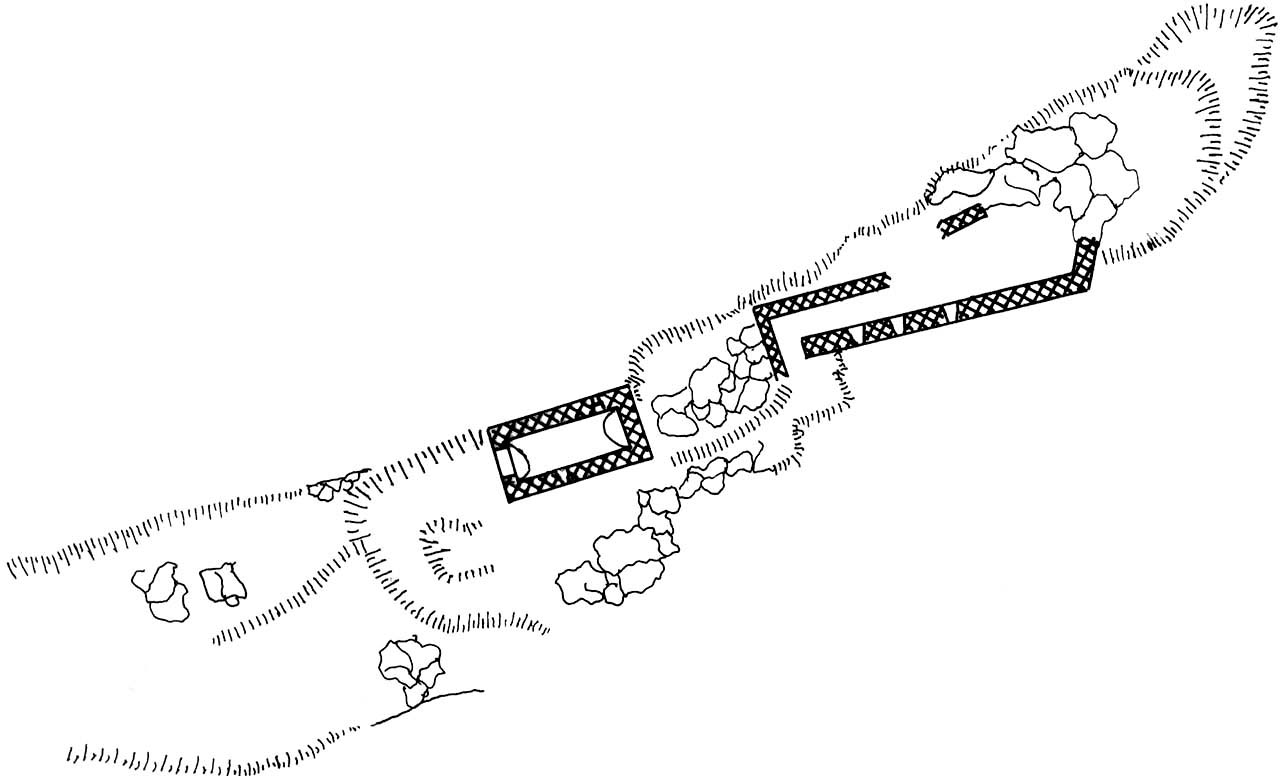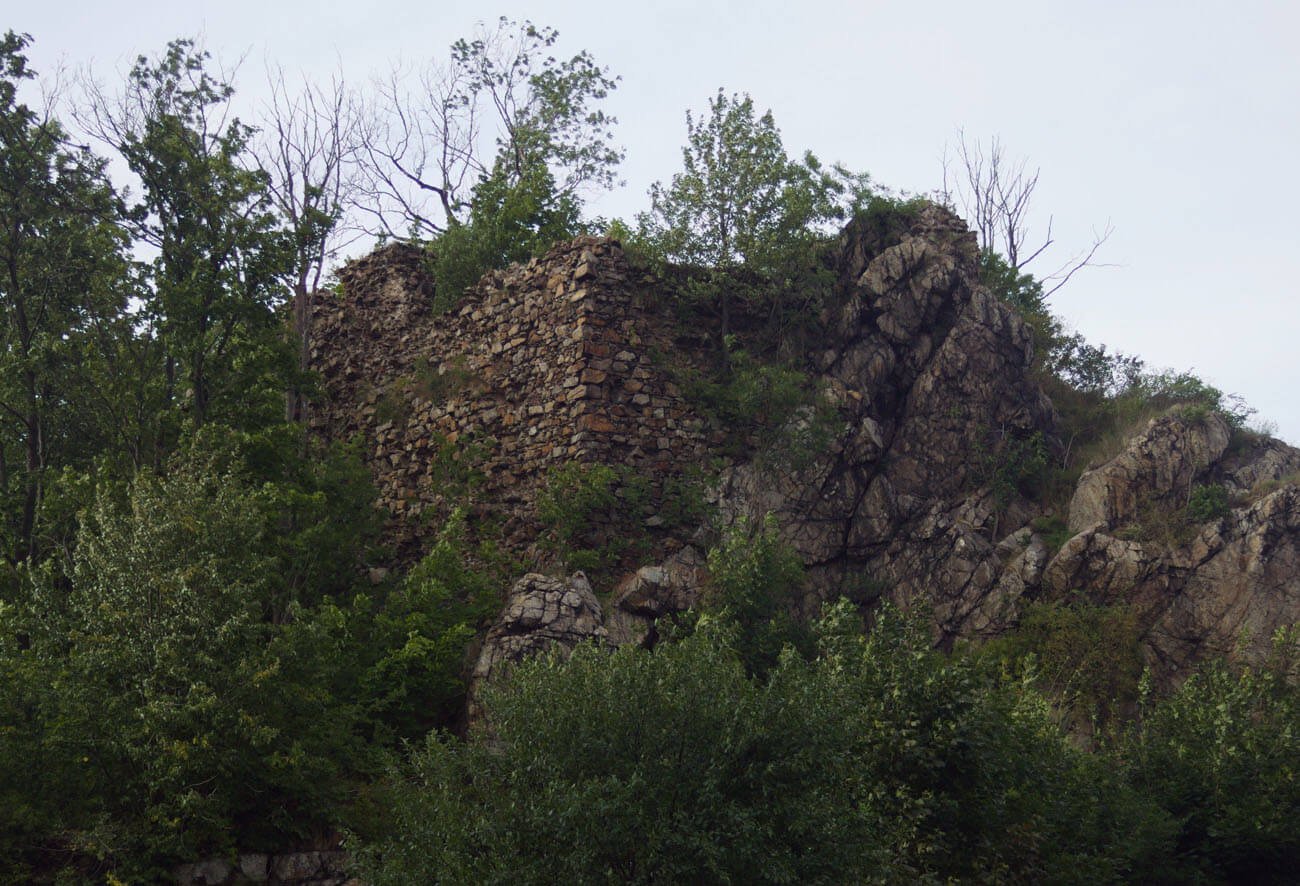History
Podskale Castle (German: Talkenstein) did not appear in documents from 1354 and 1364, which recorded the strongholds of the Świdnica-Jawor princes, nor was it mentioned in the imperial act from 1369 describing the endowment of Duchess Agnes. Therefore, it is not certain whether it was built at the turn of the 13th and 14th centuries, during the times of Bolko I the Strict, a prince known for many other construction investments. In 1368, at the time of the incorporation of the Świdnica-Jawor duchy into the Czech crown, the castle called Talkenberg (Dalkenberg) was supposedly sold to the knights who began to write themselves from it, perhaps originally holding the office of local burgraves. The brothers Reintsche and Nicholas von Talkenberg were recorded in Rząsiny (German: Wolkersdorf) as early as 1367. In 1372 they increased their goods by purchasing the rural estates of Marithe von Wachaw, while in the years 1385-1387 the only recorded owner of the estates was Nicholas von Talkenberg.
During the Hussite Wars, the Talkenbergs probably, like many other Silesian families, collected illegal customs duties on the routes, and doing even more bloody robbery. The period of anarchy, continued during the struggle for the Czech Crown, was attempted to end only by Matthias Corvinus, after taking power over Silesia in 1479. One of his orders issued that year in Lwówek was the liquidation of Bernard Talkenberg’s rogue activities. Although Bernard was initially a supporter of the Hungarian king, he later began to favor George of Podiebrady and Vladislaus II of Bohemia. For this reason, Podskale was to be destroyed by the troops of the towns of Lwówek and Jelenia Góra, supported by the Lusatian towns and Hungarian troops under the command of the governor of Silesia, Georg Stein. Then the castle was blown up by miners from Kowary and dismantled by masons from Jelenia Góra and Lwówek. The surrounding estate, along with the village of Rzęsiny, was confiscated and handed over to the Lwówek councilors for hereditary possession.
Bernard’s brother, Christoph von Talkenberg, who settled in Bohemia, tried to withdraw the royal decision. He achieved a high position at the court of Vladislaus II as a councilor, messenger, and from 1480 the starost of the Duchy of Głogów. In 1490, Georg Stein wrote to the town council of Lwówek to return Rzęsiny to the Talkenbergs, but the townspeople did not follow the recommendation. Only in 1491, after the death of Corvinus and the passing of all Silesia to the Jagiellonian king, the owners of Podskala came to an agreement with the councils of Lwówek. In the 16th century, the castle was to be partially rebuilt by Christopher Talkenberg. Around 1530, however, it was abandoned by Ramphold Talkenberg, who moved to nearby Płakowice. Since then, the castle has been deteriorating. In 1818, its remains were dismantled and used in the construction of the road.
Architecture
The castle was a two-part complex consisting of an upper and a lower ward, built of erratic stones. It occupied a rocky, longitudinal ridge of a hill with steep slopes and a 7-meter-wide top. The rock ridge was the eastern point of the hill, which fell quite gently to the west, allowing access to the castle. However, the northern and southern slopes were steeper.
The outer bailey had the form of a rectangular flattening occupied by a building with a basement on the plan of an elongated quadrilateral. The upper ward of the castle was formed by a series of long curtains of the defensive wall filling the spaces between the rocks. In the southern curtain, three arrowslits were created, accessible from a very narrow courtyard. The main residential building had to be located in the south-eastern, uppermost part of the headland.
Current state
The relics of the defensive wall and the remains of the upper ward residential building on the top of a rocky hill have survived to the present day. In the lower castle there are relics of a vaulted cellar.
bibliography:
Boguszewicz A., Corona Silesiae. Zamki Piastów fürstenberskich na południowym pograniczu księstwa jaworskiego, świdnickiego i ziębickiego do połowy XIV wieku, Wrocław 2010.
Chorowska M., Dudziak T., Jaworski K., Kwaśniewski A., Zamki i dwory obronne w Sudetach. Tom II, księstwo jaworskie, Wrocław 2009.
Leksykon zamków w Polsce, red. L.Kajzer, Warszawa 2003.


